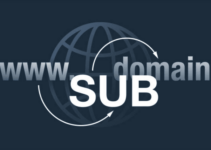E-learning, which is learning that is helped by technology, comes in a wide range of shapes and sizes. When it comes to e-learning examples, however, few teachers know how far they can go. In this article, I have talked about 5 examples of e-learning.
During this piece, we’re going to look at four of them, but e-learning is used for a lot more than this.
Technology has made it possible for us to move away from traditional, face-to-face educational paradigms and toward virtual ones.
People can learn anything, from Python programming to Japanese to accounting, with the help of modern software systems. They don’t even have to leave their homes.
When you turn on your computer, you get information from world-renowned chefs, lecturers, and other people.
You can learn skills that are in high demand through programmes that were made with help from employers.
These things are made possible by e-learning, It gives people all over the world access, affordability, and opportunities. People who were limited in their choices because of where they lived now have more options.
e-learning is also growing as technology spreads and becomes more reliable. By 2022, the e-learning market is expected to reach $243 billion.
In the past, education was only available to people who were in the right place at the right time. Today, everyone can get an education.
You can now get an interactive college diploma from the comfort of your own home or office. It costs a lot less than going to college, but you can study at your own pace and at your own pace.
Table of Contents
This is a list of 5 examples of e-learning:
- Airbus is saving a lot of money by using e-learning
- eLearning Example of Massive Open Online Courses
- E-Learning Examples in Higher Education
- “Nano-Degrees” or “Micro-Credentials”
- Interactive Elearning Virtual Workshops
Airbus is Saving a Lot of Money by Using E-Learning
E-Learning Example of Massive Open Online Courses (MOOCs)
A lot of different topics are covered, from “Shaping the Future of Work and Google Cloud Architecture” to more general topics like “The Science of Well-Being” and “How to Draw from Beginner to Master.”
This means that no longer do people who want to become animal Reiki practitioners or data engineers on Google Cloud have to go to a real university. They can get a “Professional certificate” from a company like this.
Coursera’s platform now has more than 4,600 courses. The following are some of the examples of e-learning that they have used.
- People who want to get a professional certificate should look for programs that are interactive and show them how to deal with situations that could happen on the job.
- MasterTrackTM Certificate programs that are approved by higher education institutions can be used to get a Master’s degree.
- People learn a new language.
These massive open online courses (MOOCs) have made it look like a university, with a wide range of scenario-based classes taught by top-notch teachers.
Another example is edX, which has more than 2500 free courses on its site. These examples came from universities like Harvard, MIT, and UC Berkeley, which are all reputable.
This isn’t the only thing they do. They also have a way to see how other people feel about the subject.
People who go to college on physical campuses pay a lot more for this example than people who go to college online. They don’t have to pay for dorms or textbooks, and they can spread information more quickly because they don’t have to pay for them.
When people use e-learning, they can get more education and e-learning. This is one of the many benefits of it.
These courses often have recorded “lectures” and “exams” to help you remember important information.
It’s easy to learn at your own pace because the lessons are available when you need them. This makes it easier for people who learn in different ways to get to it.
The kind of certification you get affects the way you take your test. Exams like short multiple-choice quizzes or long-form essays that your peers grade are examples of these exams. Another example is a project that the instructor or your classmates look over.
These examples of e-learning are still going up. They don’t force you to follow a set curriculum through formal, standardised schooling. Instead, they let you learn about a subject that interests you at a low cost.
E-Learning Examples in Higher Education
Formal education institutions, like colleges and universities that are approved by the government, are moving more and more of their classes online. They let students learn from well-known and accredited teachers in a more convenient way.
In the beginning, the University of Phoenix and Capella University were two of the first “virtual” schools that opened their doors. They were the first to offer online degrees for both bachelor’s and masters.
There were more online courses as internet and software got better, so more universities started to offer them. They started out with a small number of courses, but now they offer whole degrees through interactive eLearning.

These online college and university programmes will help the institutions a lot. They can support a lot more students than in-person learning and allow students to learn no matter where they are.
Many people can now get high-quality educational opportunities that were only available in person.
Examples of e-learning in higher education come in many different forms. Some are based on recorded lectures and progress checks, while others have moved the in-person approach to the internet, giving students live lectures and timed tests.
Some online universities also have a social part. If your classes are recorded and you don’t get to talk to anyone in person, it can be lonely and isolated.
For some people, meeting people from different backgrounds and walks of life as part of their college experience might be a negative.
While e-learning can be used by people from all over the world, online institutions have a big problem with fostering a sense of community.
Regardless, many people will find these examples of high school eLearning to be good choices.
You can get a degree that has the same value and status as one that is done in person, but you don’t have to drive to school.
You won’t have to follow strict class schedules or sit in crowded lecture halls, but you’ll still be able to learn more and improve your job prospects.
Interactive E-learning Virtual Workshops
No, I’ve never thought I’d be able to learn to cook with Jamie Oliver, the world’s best chef.
If you want to learn ballet, why not do it at home?
In the past, fitness and yoga programmes, cooking classes, and even crafting lessons were offered in person. It used to be hard to picture a situation where you could do these things online.
It would not be the same thing to use a one-way, pre-recorded video in a class where you need to critique your form. People who take crafting and cooking classes often need things they don’t have at home, but the company that runs them usually has them.
elearning that had more problems to deal with took longer to move online than other types of elearning because there were more problems to deal with
Instructors can now communicate with their students electronically, giving them advice on how to do downward dog or giving them help if the pan starts to catch fire while they’re cooking salmon. They can also use quick delivery times to get yarn for their students to knit with.
In on-demand elearning, there isn’t usually a lot of interaction. In live workshops, there is.
Remember when we said that elearning doesn’t build a sense of community the way that in-person learning does?
This is what happens to a student who lives on their own, goes to school online, and even works from home. They’ll be very interested in live, interactive lessons.
Almost all of the examples we’ve given so far are of recorded, on-demand lessons.
People who take e-learning classes that aren’t real live workshops are less lonely.
Students can talk to each other before class, just like they would at a yoga studio. They can also make plans for a virtual coffee after they learn how to knit a cap for the cold months. When people meet at virtual workshops, like in-person gyms or studios, they have a place to go.
With an internet connection, these workshops can be taken from anywhere in the world. People who live in different time zones might have a problem with the timing, but the ease of taking different courses from home more than makes up for it.
If you’re looking for something a little different than typical elearning, workshops are a good option for you.
If you want to feel like you’re part of a group while learning new things, virtual workshops let you do so from the comfort of your couch, kitchen, or home yoga studio.
“Nano-Degrees” or “Micro-Credentials”
Quick Links:






